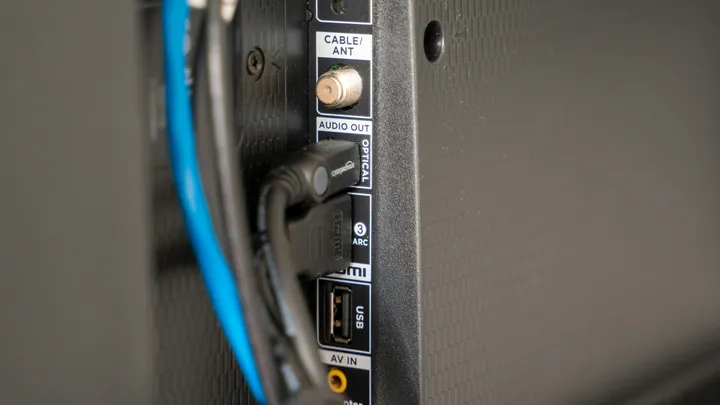
⌚ TL;DR
Ensure that your using the latest
nvidiadriversOpen
/etc/udev/rules.d/90-mhwd-prime-powermanagement.rules, and comment out this line:
# ACTION=="add", SUBSYSTEM=="pci", ATTR{vendor}=="0x10de", ATTR{class}=="0x040300", ATTR{remove}="1"Save the changes, reboot, then everything should be working!
One of the biggest issues preventing widespread adoption of Linux for Desktop users is the amount of headache involved when something fundamental doesn’t work properly. Unless you have a deep understanding of Linux and patience to tweak config files for hours on end, many of these problems can seem insurmountable - especially for new users 😱
Fortunately, things ARE definitely getting better (Ubuntu is very polished now and Manjaro has great user-friendly tools such as mhwd); these days, Linux can be a great out-of-the-box experience for many people!
However, others (such as myself) discover that their hardware simply just doesn’t work after installing the operating system & drivers. Lots of tinkering can be required to make everything work properly, if it is even possible! For example, my particular MSI laptop model enters airplane mode after waking from sleep, and can only be fixed by manually toggling the hardware wifi switch key — of which the button itself wasn’t even working until entering this into my grub config: GRUB_CMDLINE_LINUX_DEFAULT="acpi_osi=! acpi_osi='Windows 2009' quiet splash"! This fix was found on the Arch Wiki MSI GS-65 page (which has a detailed list of dozens of different sections describing different fixes required to make the laptop work as it should)
Also unforutnately (for Linux), my Laptop also has a NVIDIA graphics card which has many issues with Linux due to the fact that the drivers are proprietary. I recently made a post about how to fix external displays working simultaneously with the laptop display on NVIDIA Optimus cards using the (only recently available) PRIME solution, which is another annoying problem that should just work. The next problem I ran into, however, was even more difficult to figure out and completely undocumented online save one obscure forum post I thankfully stumbled upon!
The Problem
So, the speakers for my refurbed MSI GS-65 laptop just broke AGAIN, after two separate RMAs from the vendor for the same issue. This time however, it happened slightly outside my warranty window. No big deal, I thought, I’ll just send the audio to my monitor’s speakers through my DisplayPort!
Hah! If only it were that easy… I must have forgot, this is Linux! I sadly discovered that there were no HDMI or DisplayPort output options are available to select like they are in windows. This led me down a rabbit hole where I spent hours tweaking configuration files and trying every other fix under the sun. I honestly was about to give up out of frustration before I stumbled upon the below fix which I had not seen published elsewhere:
The Solution
-
Ensure that your using the latest
nvidiadriver, and that everything else other than audio via external display is working properly. -
Open
/etc/udev/rules.d/90-mhwd-prime-powermanagement.rules, and comment out the highlighted line below:# Remove NVIDIA Audio devices, if present **# ACTION=="add", SUBSYSTEM=="pci", ATTR{vendor}=="0x10de", ATTR{class}=="0x040300", ATTR{remove}="1"** -
Save the changes, reboot, then everything should be working properly!
To confirm, run aplay -l and you should see your NVidia audio devices showing up now:
❯ aplay -l
**** List of PLAYBACK Hardware Devices ****
card 0: PCH [HDA Intel PCH], device 0: ALC1220 Analog [ALC1220 Analog]
Subdevices: 0/1
Subdevice #0: subdevice #0
card 0: PCH [HDA Intel PCH], device 3: HDMI 0 [HDMI 0]
Subdevices: 1/1
Subdevice #0: subdevice #0
card 0: PCH [HDA Intel PCH], device 7: HDMI 1 [HDMI 1]
Subdevices: 1/1
Subdevice #0: subdevice #0
card 0: PCH [HDA Intel PCH], device 8: HDMI 2 [HDMI 2]
Subdevices: 1/1
Subdevice #0: subdevice #0
card 0: PCH [HDA Intel PCH], device 9: HDMI 3 [HDMI 3]
Subdevices: 1/1
Subdevice #0: subdevice #0
card 0: PCH [HDA Intel PCH], device 10: HDMI 4 [HDMI 4]
Subdevices: 1/1
Subdevice #0: subdevice #0
**card 1: NVidia [HDA NVidia], device 3: HDMI 0 [HDMI 0]
Subdevices: 1/1
Subdevice #0: subdevice #0
card 1: NVidia [HDA NVidia], device 7: HDMI 1 [HDMI 1]
Subdevices: 1/1
Subdevice #0: subdevice #0
card 1: NVidia [HDA NVidia], device 8: HDMI 2 [HDMI 2]
Subdevices: 1/1
Subdevice #0: subdevice #0
card 1: NVidia [HDA NVidia], device 9: HDMI 3 [HDMI 3]
Subdevices: 1/1
Subdevice #0: subdevice #0
card 1: NVidia [HDA NVidia], device 10: HDMI 4 [HDMI 4]
Subdevices: 1/1
Subdevice #0: subdevice #0**
After applying the above fix, it totally makes sense why HDMI audio wasn’t working before given that it’s disabled by default in these power management rules. I honestly don’t know why it would be automatically disabled or why there isn’t a software toggle or even documentation noting this, it seems that HDMI audio is quite a common use case!
But since this solution worked for me, I hope it will work for you too and save you the countless hours of frustration I spent trying all of the other obvious (and not so obvious) solutions 😁
